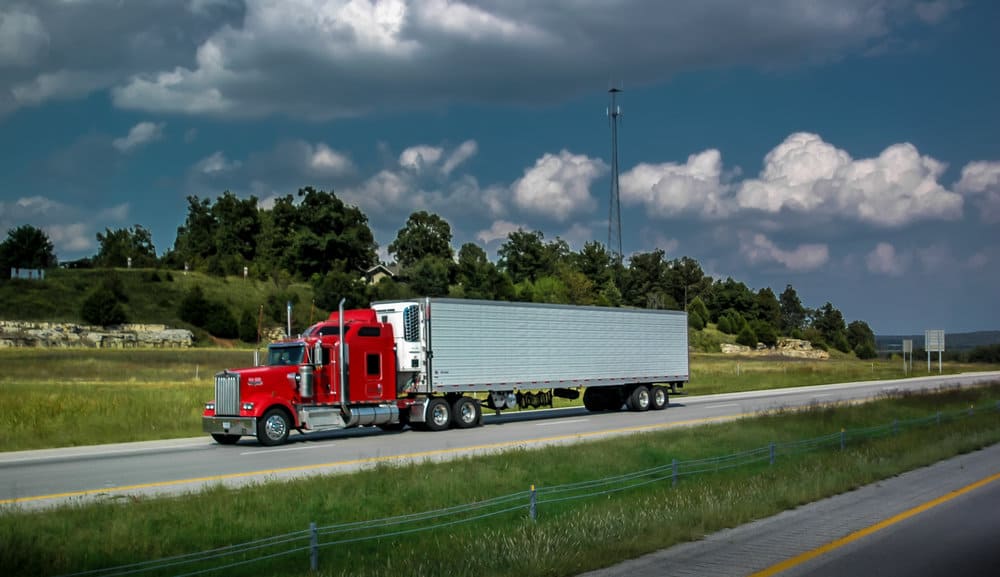
It’s been nearly a year since freight markets in the United States rolled over into an extraordinarily inflationary cycle, with strong demand and tight capacity working together to put pricing power back in the hands of trucking carriers, railroads, and air freight lines. Truckload rates, especially, have grown so quickly that large shippers have been unable to keep pace. Four quarters into the market, shippers are still blaming high transport costs for compressed margins and disappointing earnings reports.
J.M. Smuckers, Kraft Heinz, Tyson, Hershey, and General Mills have all pointed to unprecedented inflation in transport costs as headwinds to their earnings in 2018.
Yesterday, Mark Smucker, the president and CEO of J.M. Smucker, said on the company’s earnings call that “freight expense, although anticipated to be higher, exceeded our projections by approximately $5 million.” In May, Bernardo Vieira Hees, the CEO of Kraft Heinz, referred on their Q1 2018 earnings call to “significant cost inflation, especially freight at the beginning of the year.”
Thomas Hayes, the president and CEO of Tyson Foods, went into greater detail about the challenges Tyson faced from inflationary transport costs during the company’s Q2 2018 earnings call on May 7:
“In Q1 we spoke on transportation cost challenges,” said Hayes. “Increased freight costs affected all four segments that had a net impact of about $0.14 per share for the quarter. Also as I mentioned on our last call, we took early action in the form of pricing to mitigate the impact to our margins. While we were climbing the hill, the grade steepened and now we are estimating the full-year impact to be roughly $250 million [up from $200M in Q1]. We will be working nearly cover the increase for the remainder of the year through pricing and additional cost reductions program such as improving truck weights, lead times and continues improvement projects. We are expecting the cost impact in Q3 to decline and in Q4 we should be close to full recovery. However, the gap on cost recovery for the fiscal is estimated to be $155 million or about $0.31 in EPS. Our guidance includes these variances and assumes no additional cost increases.”
Michele Buck, president of the Hershey Company North America, said during the company’s Q1 earnings call on April 28th that freight costs actually made Hershey’s earnings go negative YOY: “We had anticipated gross margin contraction in the first quarter due to higher freight and logistics costs as well as incremental investments in trade and packaging. However, this contraction was greater than we expected due to unfavorable mix, cost of complexity via incremental supply chain touch points and waste, as well as higher input costs. Overall first quarter gross margin declined 260 basis points compared to the prior year period. As a result, we are now expecting full-year gross margin to decline around 125 basis points versus prior year.”
Jeffrey Harmening, chairman and CEO of General Mills, Inc., said on the company’s Q3 FY2018 earnings call on March 21st that General Mills had to quadruple its reliance on the trucking spot market in that quarter: “we called out an increased freight costs that are up to CAGNY but the cost pressure we’re seeing is even higher than we thought at that time. We’re now having to go out to the spot market for close to 20% of our shipments versus the historic average of about 5%, and those spot market prices can be 30% to 60% higher than our contracted rates. In fact North American freight spot prices were near 20-year highs in February. Higher freight costs are impacting our raw material prices as well as the cost to ship materials from our suppliers to our factories has risen significantly. And we’ve seen higher prices in some key commodities including grains, fruits and nuts, further heightening the inflationary dynamic.”
Stay up-to-date with the latest commentary and insights on FreightTech and the impact to the markets by subscribing.











